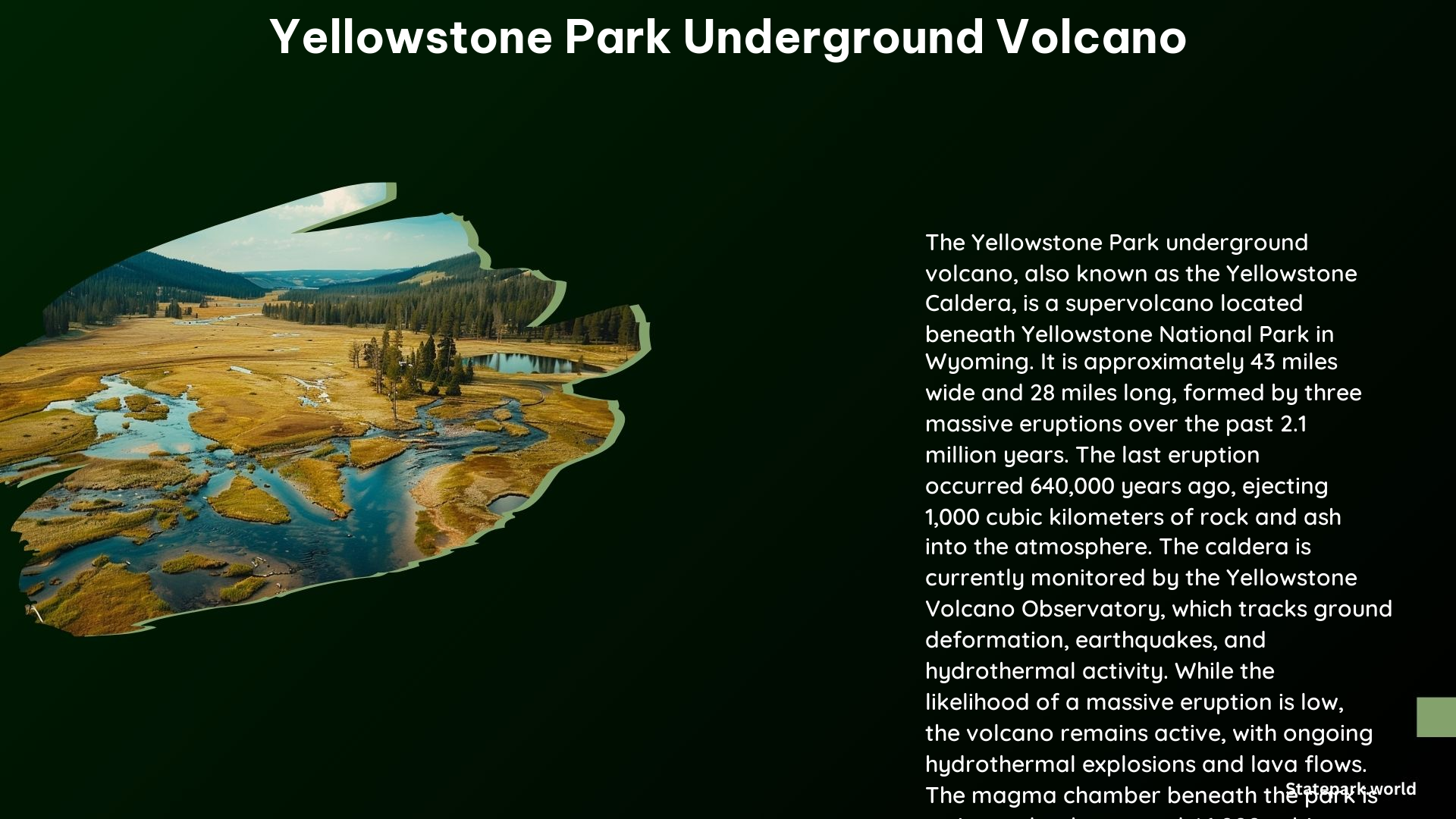Yellowstone National Park is home to a remarkable geological feature – the Yellowstone Caldera, also known as the Yellowstone Supervolcano. This massive underground volcano has captivated the imagination of scientists and visitors alike, and understanding its nature and potential impact is crucial for those exploring this iconic American landscape.
The Formation and Size of the Yellowstone Caldera
The Yellowstone Caldera was formed during the last of three supereruptions that have occurred over the past 2.1 million years. The most recent eruption, which took place approximately 640,000 years ago, created the Yellowstone Caldera and the Lava Creek Tuff. The caldera itself measures an impressive 43 by 28 miles (70 by 45 kilometers), making it one of the largest known calderas in the world.
Volcanic Activity in Yellowstone

The Yellowstone Supervolcano is renowned for its immense eruptions, which are categorized as magnitude 8 or higher on the Volcano Explosivity Index. These super-eruptions involve the ejection of vast amounts of material, capable of burying extensive areas under layers of ash. The last super-eruption occurred 664,000 years ago and left a significant impact on the landscape.
Current Activity and Monitoring
The Yellowstone Volcano Observatory closely monitors the elevation of the Yellowstone Plateau, which has been rising as quickly as 150 millimeters (5.9 inches) per year. This upward movement is an indirect measurement of changes in magma chamber pressure. The observatory also tracks ground deformation, earthquakes, and volcanic gases to detect any signs of increasing activity.
Future Eruptions
While the prospect of a future caldera-forming eruption is theoretically possible, scientists believe it is very unlikely to occur in the next thousand or even 10,000 years. The most likely activity in the near future would be lava flows or hydrothermal explosions, which are less devastating than caldera-forming eruptions.
Key Statistics
| Statistic | Value |
|---|---|
| Size of the caldera | 43 by 28 miles (70 by 45 kilometers) |
| Last super-eruption | 664,000 years ago |
| Current uplift rate | Up to 150 millimeters (5.9 inches) per year |
| Likelihood of a super-eruption | Very low in the near future |
Yellowstone National Park’s underground volcano, the Yellowstone Caldera, is a fascinating and complex geological feature that continues to captivate scientists and visitors alike. By understanding its formation, volcanic activity, and current monitoring efforts, we can better appreciate the unique and dynamic nature of this remarkable natural wonder.
References
- Wikipedia. (n.d.). Yellowstone Caldera. Retrieved from https://en.wikipedia.org/wiki/Yellowstone_Caldera
- Vox. (2014, September 5). What would happen if the Yellowstone supervolcano actually erupted? Retrieved from https://www.vox.com/2014/9/5/6108169/yellowstone-supervolcano-eruption
- National Park Service. (2021, August 31). Volcano – Yellowstone National Park. Retrieved from https://www.nps.gov/yell/learn/nature/volcano.htm
- National Geographic Education. (2024, April 29). When a Sleeping Giant Awakes. Retrieved from https://education.nationalgeographic.org/resource/when-sleeping-giant-awakes/
- USGS. (n.d.). Is Yellowstone overdue for an eruption? When will Yellowstone erupt? Retrieved from https://www.usgs.gov/faqs/yellowstone-overdue-eruption-when-will-yellowstone-erupt
